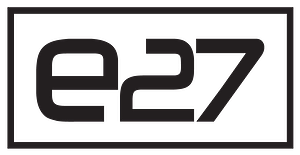The New Corporate Crime: Tampering with AI Models
Tampering with AI models is emerging as a high-stakes corporate crime, with regulators worldwide treating manipulations, data poisoning, and AI misrepresentation as serious offenses that demand rigorous governance and compliance.
Artificial intelligence is no longer just a tool for corporate efficiency—it is rapidly becoming the backbone of decision-making, customer engagement, and product innovation. But as AI’s role expands, so does the potential for abuse. Tampering with AI models—whether through prompt manipulation, data poisoning, or deceptive marketing—is emerging as a serious new form of corporate crime. Regulators are taking notice, and companies that fail to manage these risks could face severe legal, financial, and reputational consequences.
The Expanding Risk Landscape
The concept of tampering with AI models spans a range of activities, from manipulating outputs for malicious purposes to misrepresenting AI capabilities to customers and investors. These acts, once viewed as technical misconfigurations or “grey area” marketing, are increasingly treated as fraud, unauthorized access, or even cybercrime.
Beyond Technical Glitches
Tampering is not the same as a system malfunction. It involves deliberate acts to alter how an AI model behaves, bypassing safeguards, or corrupting training data. In legal terms, intent matters—if a company or its employees knowingly manipulate an AI system for advantage, they may be committing a crime.
Forms of AI Tampering
Prompt Injection and Output Manipulation
Prompt injection involves crafting inputs that bypass an AI model’s safety mechanisms. In corporate settings, this could mean extracting confidential information from internal AI tools or forcing outputs that would otherwise be blocked. Under U.S. law, such actions can be prosecuted under the Computer Fraud and Abuse Act (CFAA), equating them to hacking.
AI Washing and Misrepresentation
AI washing occurs when companies falsely market a product or service as AI-powered, exaggerating its capabilities to attract customers or investors. Regulators, such as the U.S. Securities and Exchange Commission, have already issued penalties for misleading claims, and in the European Union, such conduct could trigger both fraud and unfair competition charges.
Data Poisoning
Data poisoning refers to the deliberate insertion of misleading or malicious data into a model’s training set. This can be done to distort model behavior, influence decision-making, or degrade accuracy over time. For companies, the threat is twofold: they may fall victim to data poisoning, or—worse—be implicated in carrying it out against competitors.
AI-Enabled Corporate Misconduct
AI can be weaponized to commit traditional corporate crimes at scale. From generating deepfakes for fraud to using algorithms for price-fixing, these actions fall under existing criminal and antitrust laws. The U.S. Department of Justice has made it clear that AI-assisted crimes will result in harsher sentencing.
Why This Matters for Executives
Tampering with AI is not only a legal risk—it is a direct threat to business integrity and trust.
Legal Exposure
Criminal charges can range from fraud to unauthorized access, with penalties including fines, injunctions, and imprisonment. In some jurisdictions, corporate officers can be held personally liable if they fail to implement adequate AI governance measures.
Financial and Reputational Damage
The financial fallout from AI-related scandals can dwarf the initial gains from tampering. Beyond regulatory fines, companies face investor lawsuits, customer loss, and permanent brand damage.
Operational Disruption
When AI models are compromised, it can halt critical business functions. Restoring trust in tampered systems is often more expensive and time-consuming than replacing them entirely.
Regulatory and Governance Developments
Global Legal Trends
-
United States: DOJ guidance now includes AI misuse as an aggravating factor in sentencing. The CFAA is being applied to prompt injection cases.
-
European Union: The AI Act introduces strict compliance requirements for high-risk AI systems, with non-compliance potentially leading to criminal prosecution.
-
Asia-Pacific: Countries like Singapore and Australia are integrating AI risk into cybersecurity and corporate governance frameworks.
Corporate Governance Best Practices
-
Implement AI-specific risk assessment in compliance programs.
-
Conduct regular AI model audits to detect bias, drift, and vulnerabilities.
-
Establish incident response protocols for suspected tampering.
-
Maintain transparent documentation of AI training data and decision logic.
Preparing for the Next Wave of AI Crime
Tampering with AI models is not just a technical vulnerability—it is becoming a recognized corporate crime with legal frameworks catching up fast. For executives, the mandate is clear: treat AI integrity as a core compliance issue, not an IT concern.
Organizations that move early to secure, monitor, and transparently manage their AI systems will be better positioned to avoid legal trouble, maintain customer trust, and lead responsibly in the AI-driven economy.



